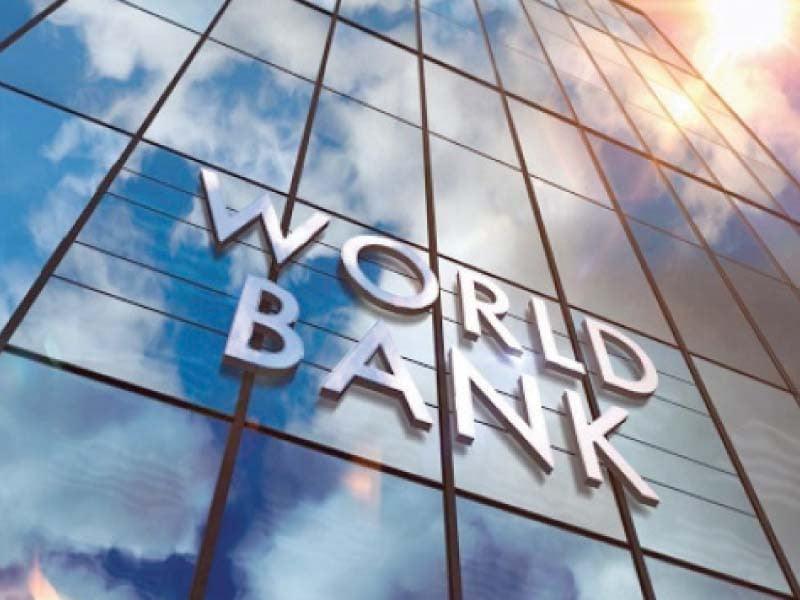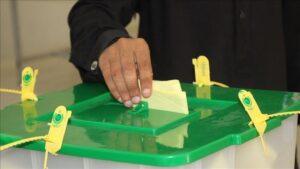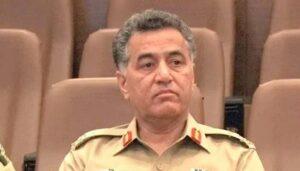ISLAMABAD:
The World Bank is on the verge of approving a $20 billion indicative loan package for Pakistan, the world’s first ten-year mega package that will shield its funded projects from political transitions and focus on just six specific areas.
The areas have the support of the broader political spectrum and are expected to be unaffected by any changes in government during the period 2025 to 2035, the period in which at least three general elections are expected to be held.
Titled “Pakistan Country Partnership Framework 2025-35”, the program largely aims to improve social indicators in the most neglected but important areas such as health, education and climate change, according to official documents and background discussions. with the Pakistani authorities, who negotiated the package.
A key Pakistani official, who was part of developing the framework, said the World Bank had chosen Pakistan as the first country where it would introduce a 10-year partnership strategy.
“The World Bank’s total indicative lending envelope for fiscal years 2025 to 2035 will be about $20 billion,” the draft framework reads. This ‘National Partnership Framework’ is scheduled to be approved by the World Bank board of directors on January 14.
After the approval, World Bank Vice President for South Asia Martin Raiser is also expected to visit Islamabad.
The 10-year framework is based on six outcome goals, focusing on critical development foundations where Pakistan lagged furthest behind. After 10 years, the plan will reduce child stunting by 30% and learning poverty to below 60%.
Of the $20 billion, the World Bank’s concessional arm, the International Development Association (IDA), will lend $14 billion and the remaining $6 billion is expected to be provided through the relatively expensive window, the Bank. International Reconstruction and Development (IBRD). .
“However, these indicative loans will depend on the evolution of IDA financing over the years, Pakistan’s position and performance, including with respect to the Sustainable Development Financing Policy and its IDA vulnerability indicators. debt,” the documents read.
In addition to the $20 billion in loans to the government of Pakistan, the new Country Partnership Framework also aims to support another $20 billion of private loans provided by the other two arms of the World Bank: the International Finance Corporation (IFC). ) and the Multilateral Investment Guarantee Agency (MIGA). ). This brings the total package to $40 billion, but official loans will be equivalent to $20 billion.
The World Bank’s new loans to Pakistan will focus on six areas, which “currently enjoy strong support across the Pakistani political spectrum,” according to the documents.
The World Bank’s expensive, concessional loans will be targeted toward “larger projects on average, more frequent scale-ups and expansions, and fewer pilots and one-off operations,” according to the World Bank’s planning document.
The World Bank’s new framework will focus on six areas, but will phase out lending from 10 lower-impact sectors.
Areas such as transportation, energy transmission, telecommunications, mining, and urban infrastructure would not receive IDA or IBRD financing. The World Bank will support these sectors through investments facilitated by IFC and MIGA guarantees for foreign investments.
The World Bank will also abandon tertiary health care, higher education, technical and vocational training, logistics and entrepreneurship.
The World Bank’s new strategy marks a shift from “short-term macrofiscal adjustment programs and often small investments dispersed across a wide range of sectors, to more selective, stable and larger investments in areas that are critical for development and sustained growth”.
The documents stated that the World Bank would continue to support reforms to stimulate growth and investment, as well as create more fiscal space.
The 10-year planning framework “will help protect the program from the country’s volatile politics and the frequent changes in priorities and requests that follow changes in government.”
Requests made after changes in government have led to “a fragmentation of the World Bank’s portfolio and diluted effects,” according to the World Bank’s assessment.
World Bank documents claimed that Pakistan’s income levels had stagnated and there was a high rate of infant mortality, child stunting, fertility and learning poverty due to low investment in health, education, water, sanitation and others. public services.
The World Bank said the reasons for low investment and growth include inconsistent macroeconomic policies fueled by volatile politics, a complex and inconsistent business environment, distorting trade and investment policies and recurring conflicts on Pakistan’s borders.
“The most recent cycle was exacerbated by increased political instability that magnified the adverse impacts of Covid-19, commodity price shocks and the 2022 floods.”
Pakistan’s economy is slowly recovering from the recent macroeconomic crisis as the government is engaging in a new round of ambitious fiscal, energy, business environment and other reforms, according to the Washington-based lender’s assessment.
six areas
The first target area will be to reduce child stunting by focusing on a health, nutrition and family planning programme, particularly for adolescent girls, mothers and newborns.
As a result of World Bank loans, 54 million people are expected to receive quality health, nutrition and population services, 18 million women will use modern contraceptives and 60 million people will receive water, sanitation and hygiene services.
The second target area is to reduce learning poverty by improving enrollment and ensuring attendance at quality primary and secondary schools that provide strong fundamental learning, especially for girls, who make up the majority of out-of-school children.
According to the plan, thanks to World Bank loans, around 12 million children (almost half of those currently out of school) will receive a better education.
The third area is to increase climate resilience and address the climate nexus between agriculture and water. Around 17 million people will be nutritionally secure and 78 million people will gain greater resilience against climate risks.
The decarbonization of the environment is the fourth area. And the World Bank’s intervention will be through a sustainable transition to reduce greenhouse gas intensity, particularly in energy, in addition to addressing air pollution emission factors.
The planned interventions will contribute to reducing the average annual concentration in the air of certain materials by 25% and will produce 10 GW of renewable electricity.
The fifth sector will increase fiscal space by improving revenue collection and rationalizing expenditure. The goal is to stabilize the fiscal framework and eventually increase progressive and efficient public spending on basic social services for the bottom half of the population. The interventions are expected to increase the tax-to-GDP ratio to 15%.
The other objective is to increase public spending towards the bottom half of the total population by 60% during the implementation period.
Increasing private investment to improve productivity is the sixth sector and this area will focus on private investment. According to World Bank estimates, private capital investments of around $20 billion will be facilitated.
Implementation of the ten-year framework will be supported by rolling two-year business plans to be agreed upon by both parties.




